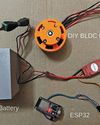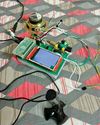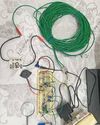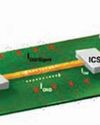
Thin, printed batteries represent a revolutionary advancement in battery technology, characterised by their remarkably slim profiles—often just a millimetre thick. This minimal thickness is achieved through a specialised printing process where all essential components, including electrodes and electrolytes, are deposited onto a flexible substrate. The choice of materials, typically acid-based solutions like zinc-carbon, is critical as these are not only conducive to the printing process but also effective in thin-layer applications.
The flexibility of these batteries is derived primarily from two factors: the thinness of the cells and the pliability of the substrate onto which they are printed. This combination ensures that the batteries can bend and flex without compromising their structural integrity or performance. This makes them ideal for applications where traditional rigid batteries would not be feasible.
On the other hand, bulkier flexible batteries take a different approach by modifying traditional components to enhance flexibility. This often involves adapting the electrolyte, electrode, and packaging materials. For example, using a semi-solid or solid-state electrolyte within a flexible lattice structure helps maintain ion flow while allowing the battery to bend. Packaging innovations, such as pre-crumpling, are crucial for improving durability during flexion, reducing potential damage by prestressing the material.
Electrode and electrolyte innovations
The choice of electrode for a flexible battery is primarily determined by the chemistry utilised. These batteries often use printed electrodes made from materials such as carbon and primary lithiumbased compounds, the latter used for non-rechargeable purposes. The printing process deposits these materials directly onto flexible substrates, enhancing the battery’s overall flexibility due to its thinness.
Diese Geschichte stammt aus der November 2024-Ausgabe von Electronics For You.
Starten Sie Ihre 7-tägige kostenlose Testversion von Magzter GOLD, um auf Tausende kuratierte Premium-Storys sowie über 8.000 Zeitschriften und Zeitungen zuzugreifen.
Bereits Abonnent ? Anmelden
Diese Geschichte stammt aus der November 2024-Ausgabe von Electronics For You.
Starten Sie Ihre 7-tägige kostenlose Testversion von Magzter GOLD, um auf Tausende kuratierte Premium-Storys sowie über 8.000 Zeitschriften und Zeitungen zuzugreifen.
Bereits Abonnent? Anmelden

ESP32-Powered AUDIO-VISUAL SIREN
This sound alternator is designed to simulate the effects of a police siren, combining sound and light to create a dynamic audio-visual experience.

BLDC MOTOR With Web-Based Speed Control Using ESP32
Integrating wireless control into brushless direct current (BLDC) motor systems opens up exciting possibilities for applications such as remote-controlled cars, robots, and other innovative systems.

Pi Zero Portable BILINGUAL TRANSLATOR
This system is designed as a bilingual translator, leveraging the gTTS library to support multiple Indian languages, including English (en), Bengali (bn), Gujarati (gu), Hindi (hi), Kannada (kn), Malayalam (ml), Marathi (mr), Tamil (ta), Telugu (te), and Urdu (ur).

Op-Amp-Based VEHICLE THEFT DETECTOR
A simple, low-cost device can effectively alert homeowners or occupants if a parked vehicle is moved or tampered with.

loT SMART METER With Dashboard
Energy meters in homes track electricity usage, enabling accurate billing by governments and providers.

Choose The Right Cloud Platform For Implementing loT PROTOCOLS
Working with loT protocols like MQTT, AMQP, and CoAP on cloud platforms is essential for developing scalable and efficient lol applications. The choice of the programming platform will depend on factors like project requirements, existing skills, and target devices. Leveraging the appropriate libraries and cloud services can enable seamless integration of lol devices with cloud-based applications.

Why TMR SENSORS Lead Next-Generation Design
TMR sensors are gaining traction in industries needing precision and power efficiency. What makes them the go-to choice for modern designs?

DESIGNING PCBs For EMI Management
Electromagnetic interference can derail your PCB’s performance. EMI management is not just a technical necessity but a hallmark of exceptional PCB design.

CUTTING COSTS, NOT CORNERS: Building Large Scale Applications With Open Source Software
Here are some strategies and best practices for leveraging open source to create enterprise-grade web and mobile applications without sacrificing quality or functionality.

"We Are One Of India's Very Few State Bodies To Manage The Entire Lifecycle Of The Electronics EcosystemFrom Approvals To Subsidies."
What is Gujarat State Electronics Mission GSEM), and how is it attracting major investments in electronics manufacturing, particularly semiconductor manufacturing, to Gujarat? To delve deeper, Electronics For You’s Nijhum Rudra spoke with Manish Gurwani, the head of GSEM. Here is what he revealed...